Samsung 65Q90R (QE65Q90R) review: the best TV of the year
Samsung takes QLED past OLED with superb HDR dynamics and a host of smart features

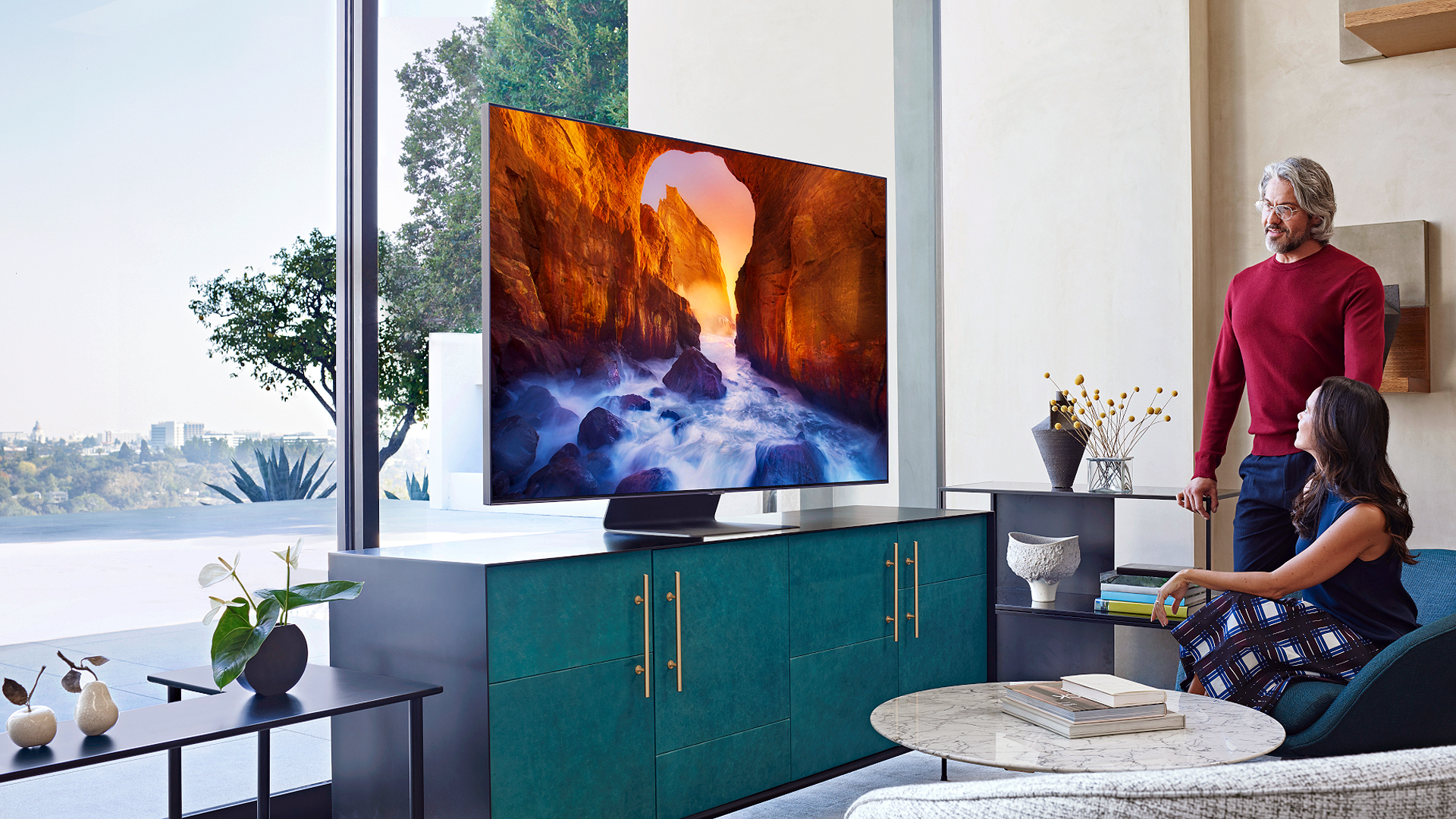
Samsung has raised the game yet again with 2019's QLED flagship. It's continued to perfect black level performance and HDR highlights, making the Q90R the ideal high-end 4K telly for living room use
-
+
Sensational LED LCD black level performance
-
+
Startling HDR performance
-
+
Comprehensive smart functionality
-
+
Brilliantly fast game mode
-
-
No Dolby Vision or Freeview Play
-
-
Somewhat less subtle than OLED, cinematically speaking
Why you can trust T3
• Buy Samsung Q90R in 55, 65 or 75 inch sizes at John Lewis
When it comes to high-end TVs, although you can still get highly impressive LED-lit LCD screens – now the 'old school' of screen tech since the demise of plasma – the real battle is between OLED and QLED. It's fair to say that OLED is usually more 'cinematic' – in the sense that in ideal lighting conditions it looks quite breath-taking – while QLED is more 'average-living-room' friendly.
However, with the Samsung Q90R, QLED may have just played a trump card in this particular war. This stunning 2019 range-topper bristles with advanced image tech, all designed to push the picture envelope so it can compare with OLED cinematically, whilst having greater overall brightness. It also happens to have an input lag so low that gamers will weep with joy. It could well be your dream screen, if you can afford it, and it's definitely the best TV of 2019 so far. No way will it be on sale on Amazon Prime Day. For this kind of quality, you pay.
Samsung 65Q90R 4K QLED TV: design
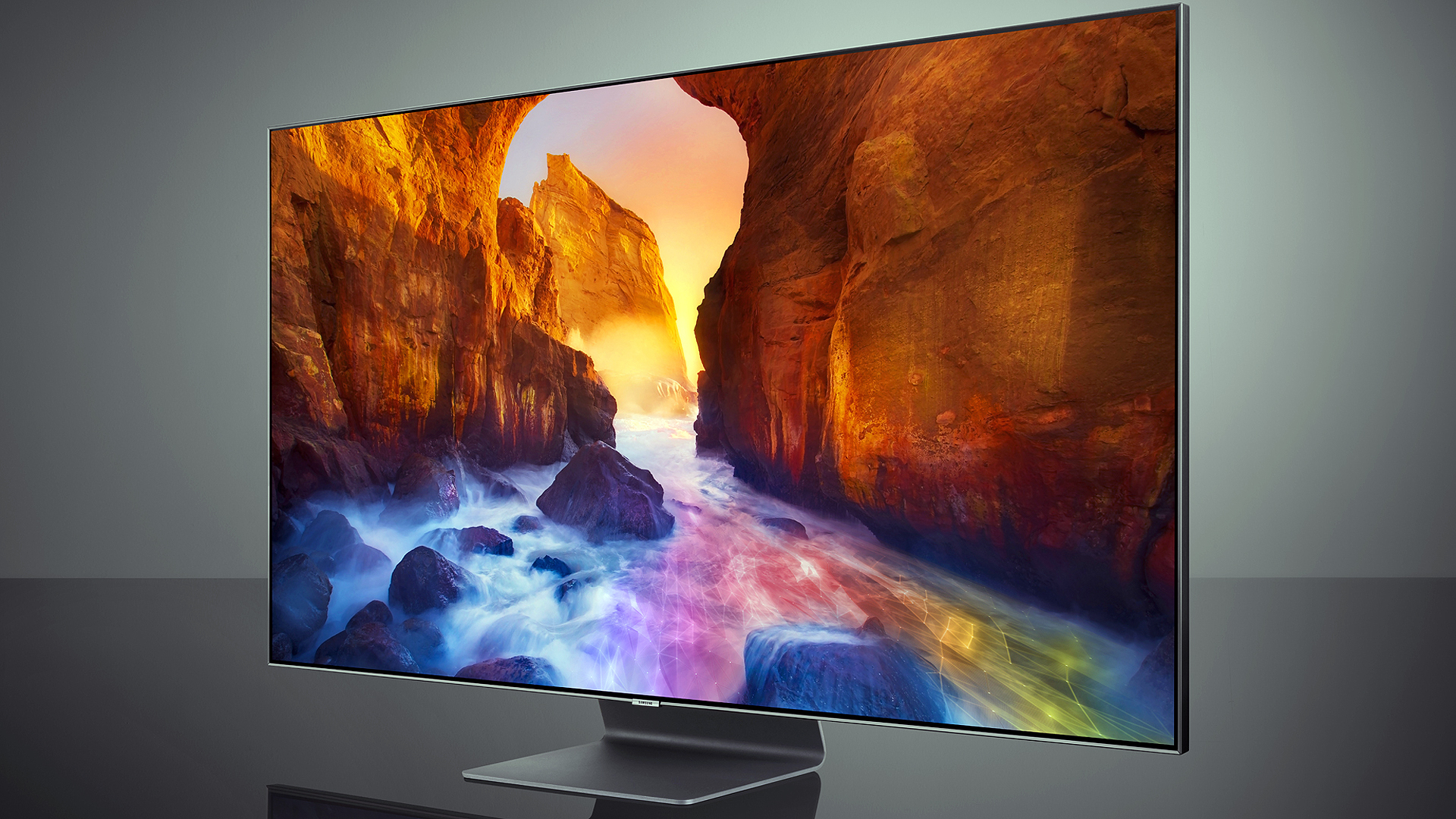
• Buy Samsung Q90R in 55, 65 or 75 inch sizes at John Lewis
Available in 55-, 65- and 75-inch screen sizes, the Q90R uses Samsung's Direct LED backlighting to maximise HDR handling and contrast. Of course, a full array backlight means the set has appreciable depth; you’ll have to drop down to the cheaper Q60R model if you want a wafer-thin edge-lit QLED this year. Samsung has literally gone big on FALD (Full Array Local Dimming).
The set comes with the brilliant One Connect Box, which tethers to the screen via a single transparent, ‘invisible’ cable that carries AV and power. It sports four HDMI (v2.0) inputs, one of which is ARC compliant, along with a digital audio optical output, a trio of USBs, and LAN connection. The box also houses a dual satellite tuner, and one terrestrial aerial input.
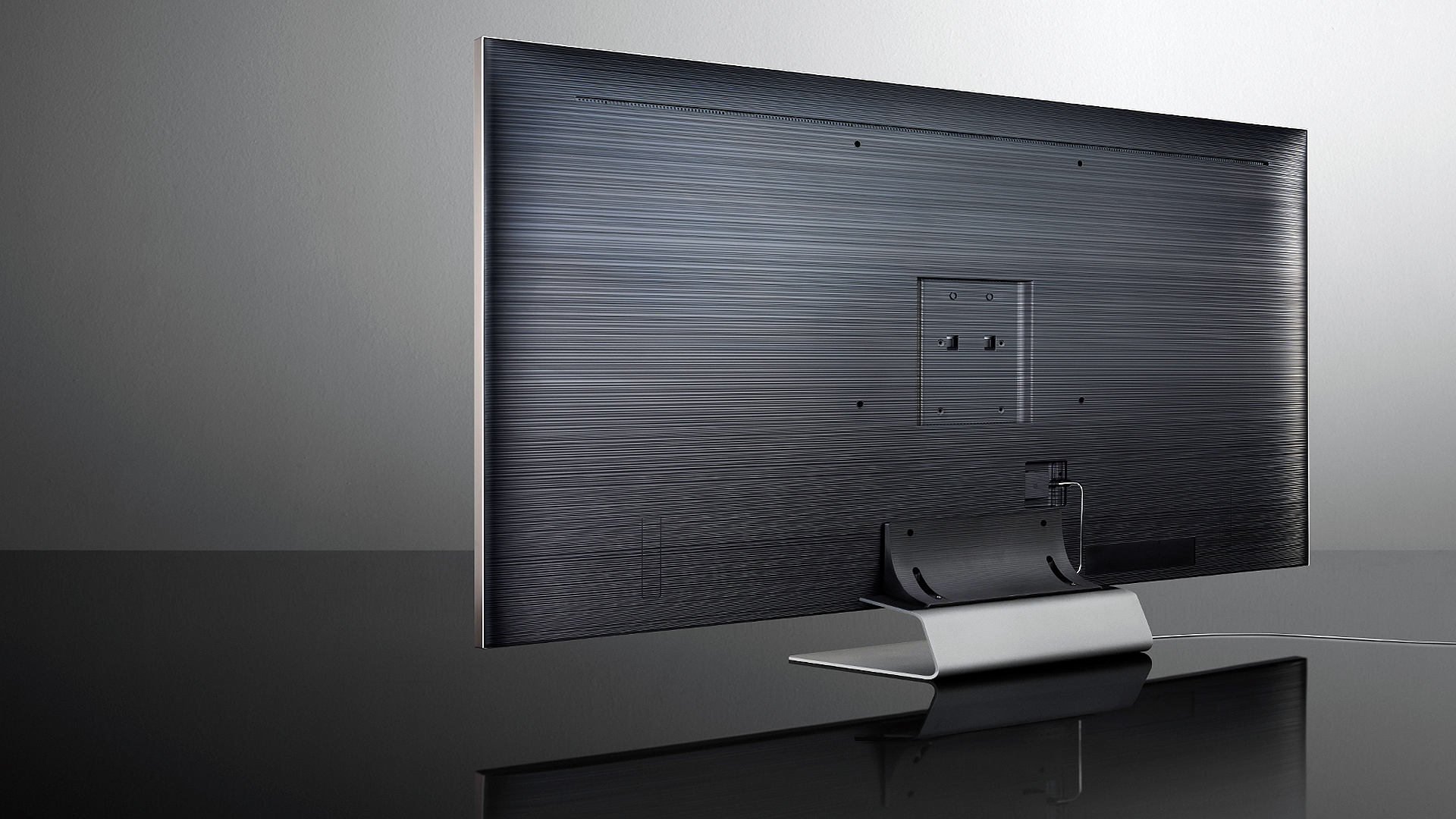
The screen itself has a neat grey plastic bezel and sits on a sensible pedestal foot, easy to accommodate if you choose not to wall-mount. Significantly, this lifts the panel higher than previous stands, creating more space for one of Samsung's chunky soundbars.
Samsung 65Q90R 4K QLED TV: features
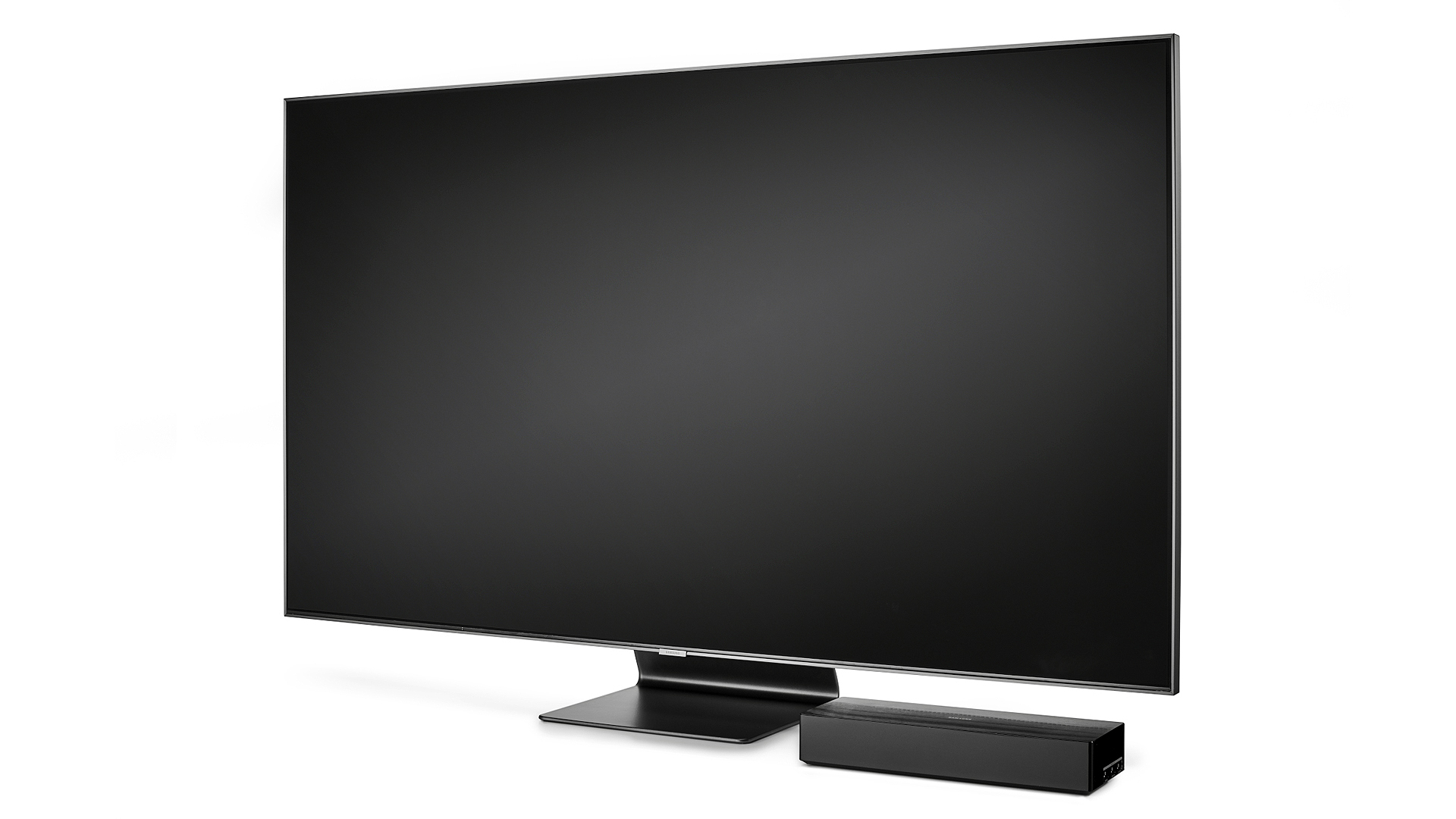
Providing the smarts is Samsung’s Tizen-based connected platform, accessed via horizontal strips which combine apps with curated content from commercial partners. There’s a full complement of catch-up available (BBC iPlayer, ITV Hub, My5, All4), plus assorted streaming services, including Chili and Google Play. Netflix, Amazon Prime Video and Rakuten TV all have dedicated buttons on the Bluetooth control.
This selection goes some way to compensating for the lack of a Freeview Play tuner, but since that's not on board, there’s no rollback programme guide to browse.
Two remote controls are supplied; one a traditional IR zapper, the other a minimal, metallic remote that connects via Bluetooth. Why isn't the main remote Bluetooth, so it doesn't matter where you point it? No idea. Seems foolish…
Samsung 65Q90R 4K QLED TV: performance
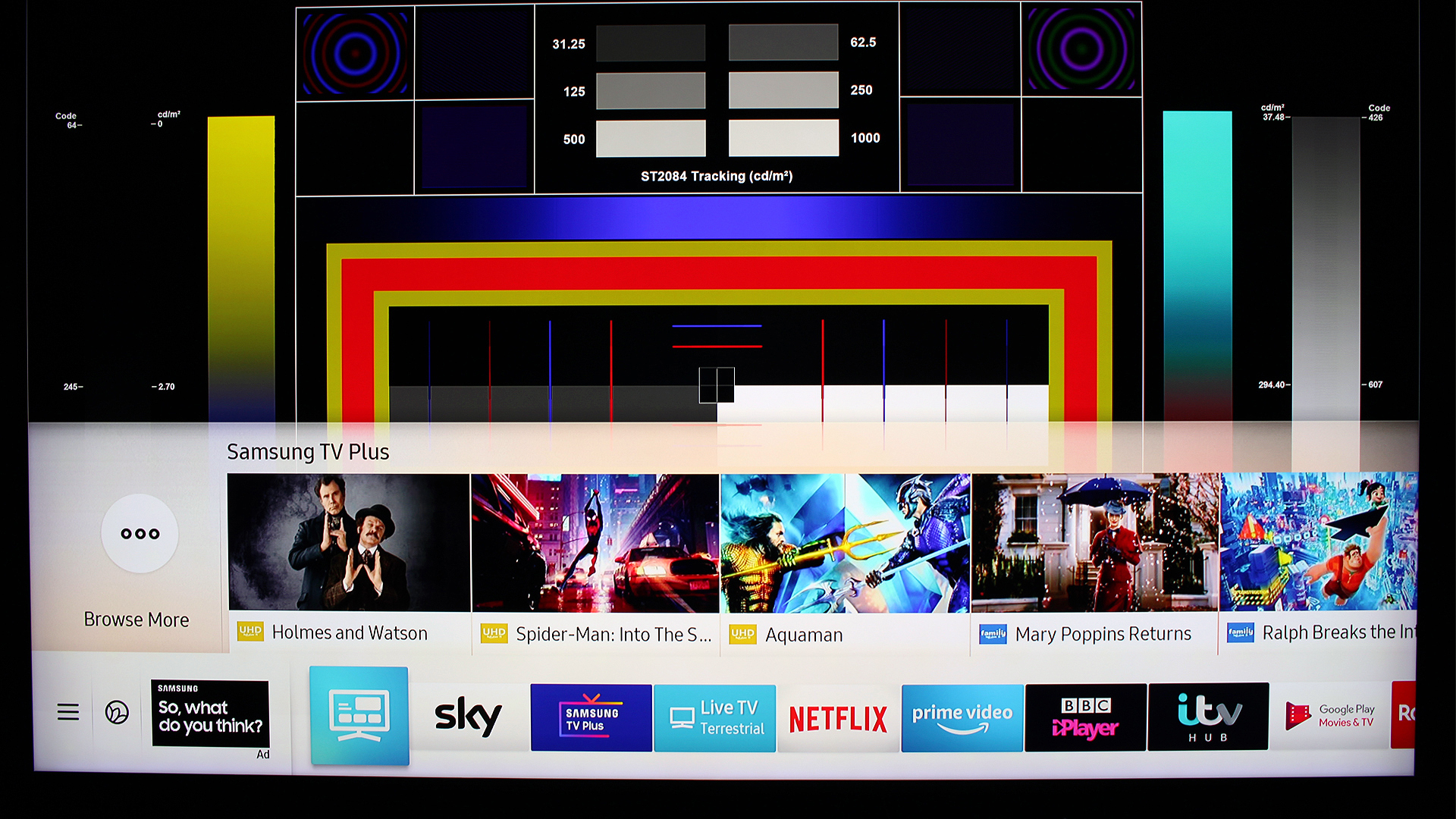
Straight from the box, the Q90R dazzles. Black level performance and colour vibrancy are outstanding. A highly effective filter soaks up ambient light reflections, to improve contrast.
The sheer naturalism of its imagery is impressive, the brightness of the panel not compromising its dark nuanced shadows, even when viewed in a brightly lit environment.
Picture modes comprise Dynamic, Standard, Natural and Movie. We found Standard the best overall setting for most content, maintaining a good balance, between accurate skin tone and shadowed detail. For viewing in bright rooms, it works well.
Standard isn’t always the best choice though. Infamous Game of Thrones episode The Long Night (season eight, episode three, via Sky Atlantic), reveals clear banding artefacts as we follow characters across the ramparts of Winterfell. Switching to Natural significantly reduces the impact of the banding in darker scenes, but there’s a price paid in lost dark detail. Inevitably, the Movie mode robs the screen of a great deal of its visual snap, muting colours like a grumpy cinematographer. It’s not recommended.
Off-axis viewing is excellent, courtesy of newly developed Ultra Viewing Angle technology. This more evenly distributes that FALD backlight, maintaining colour and contrast even when viewed from the side.
The Q90R is a really cracking choice for gamers, provided you get the right setting. In Game mode, with the Game Enhancer mode switched off, input lag was measured at a mere 14.3ms, which is phenomenal.
Importantly, none of these presets undermine image detail. Toggle between modes during the opening crawl on Star Wars: The Last Jedi and you won’t snuff out any of the background stars; they just alter in intensity.
The Q90R lacks Dolby Vision HDR support, but you do get HDR10+, the dynamic metadata alternative favoured by Amazon Video. While the implementation of HDR10+ remains sketchy, the set can now confirm it’s displaying HDR10+ content from Amazon. There’s also compatibility with HLG and vanilla HDR10.
When it comes to HDR performance, the Q90R is as dynamic as they come. Measured in Standard mode, with all Eco settings off, backlight on 40 and local dimming on standard (all everyday settings), it peaked at 1765 nits with a ten per cent HDR window. That’s around twice the peak brightness of a rival OLED.
The set is actually less bright when peak highlights are smaller (the kind you might find in regular content, like fireworks, rather than test material), but that doesn’t diminish their impact.
Of course, HDR is as much (if not more) about black and near black performance. And the Q90R excels here too. The bars on letterbox movies are genuinely black, something rarely seen on LCD TVs.
Colour fidelity is generally sumptuous. Reds are deep and rich, while even tricky blues appear naturalistic.
There’s really not a lot that needs to be tweaked about the set, although we’d advise switching off the aforementioned Auto Motion Plus when watching movies. The interpolation isn’t particularly cinematic.
With 4k sources, picture detail is uniformly clean. The set uses Samsung’s new Quantum 4k image processor, which boasts AI driven algorithms able upscale video from lesser sources. It’s a derivation of the image processor first seen in its 8k models.
Not watching a lot of HDR? The AI image processor also upscales SDR to near HDR, thereby making the most of its native panel talents, all without unwanted artifice.
The Q90R’s audio performance is perfectly acceptable, although suffers from being a panel and driver compromise, unlike rivals we’ve auditioned that have dedicated forward-firing speaker options (aka integrated soundbars).
Samsung Q90R: Verdict

The Q90R is a simply phenomenal screen. It elevates QLED to the level Samsung has been striving for since the get-go, producing images with excellent dynamics, wide band natural colour and exquisite detail. Throw in a solid smart platform, and thumb-numbing Game mode, and you have a high-end TV that justifies its expense.
• Buy Samsung Q90R in 55, 65 or 75 inch sizes at John Lewis
Samsung Q90R: basic spec
Samsung Q90R
Screen sizes 65-inches (model reviewed), 55-inches and 75-inches
HDR HDR10, HDR10+, HLG
HDMI 4
USB 3
Dimensions 1450.1 x 831.2 x 39.9mm
Sign up to the T3 newsletter for smarter living straight to your inbox
Get all the latest news, reviews, deals and buying guides on gorgeous tech, home and active products from the T3 experts
For over 25 years, Steve has been casting his keen eyes and ears over the best that the world of TV and audio has to offer. He was the creator of Home Cinema Choice magazine, and contributes to huge range of technology, home and music titles along with T3, including TechRadar, Louder, Ideal Home, the i newspaper, and more.
-
 Polar’s new subscription feature lands in the shadow of Garmin’s Connect+ rollout
Polar’s new subscription feature lands in the shadow of Garmin’s Connect+ rolloutPR genius or timing disaster? Polar’s new Fitness Programme adds adaptive training to its ecosystem
By Matt Kollat Published
-
 New Orient Star watches offer a glimpse of the magic within
New Orient Star watches offer a glimpse of the magic withinThere are two new skeleton pieces
By Sam Cross Published
-
 Netflix's most surprising 100%-rated sci-fi series returns with gorgeous trailer
Netflix's most surprising 100%-rated sci-fi series returns with gorgeous trailerLove Death + Robots is back for more
By Max Freeman-Mills Published
